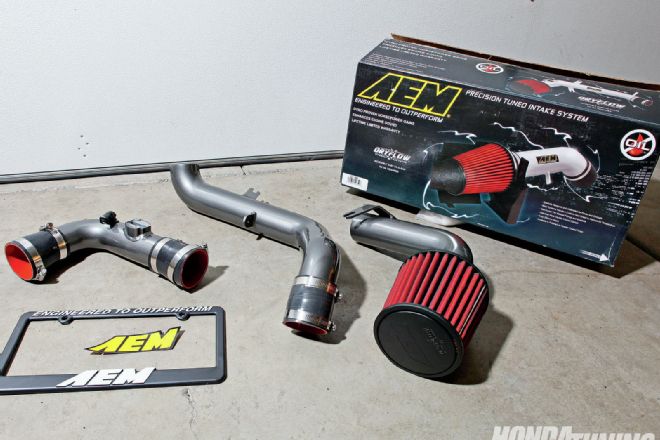So you’ve purchased a shiny new CR-Z, and though you’re not trying to break the sound barrier, you wouldn’t mind a little more “kick” to your little hybrid. We get it. Most enthusiasts will usually reach for the intake and exhaust upgrades before anything else, and for good reason. They’re typically the cheapest, widely available upgrade that will often add a little power, and assist in future upgrades. While some might travel far beyond that, most will stay within the realm of basic street-friendly bolt-ons to satisfy their speed cravings, and still maintain their trusted Honda reliability.
Recently, Doug MacMillan of Hondata spent a few hours with our Project CR-Z to gauge performance from a few different intake kits. Beyond satisfying his curiosity as to which intake will give you the best bang for your buck, he had other intentions involving the development of Hondata’s upcoming FlashPro system which should be available later this year!
All testing was done on the same day, with a constant temperature throughout all of the dyno testing. Tuning was performed to deliver equivalent air/fuel ratios (where possible) with Hondata’s prototype CR-Z FlashPro unit. The intakes tested included OEM, Injen, HKS, and AEM, all of which should be on the market and available for purchase as you’re reading this. We did a search online to get an idea of the street price for each kit. By taking an average, we listed the approximate cost for the average consumer.
AEM CAI
Approximate street price: $275
AEM is a name that must be mentioned whenever an intake conversation is in full swing. Long ago the company established itself as a heavy hitter in the intake technology market, and for years has produced Honda kits that have produced significant gains in both the midrange and top end. This particular kit is a cold-air intake that features:
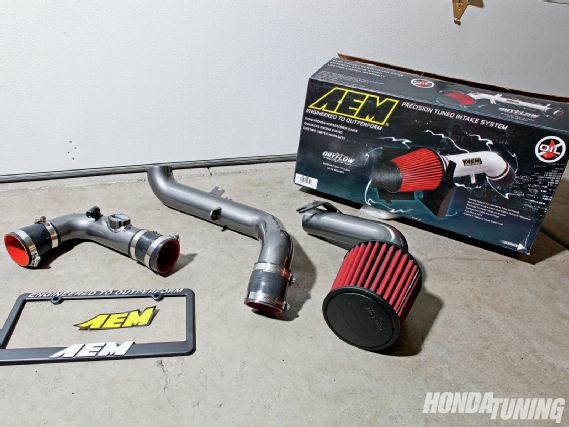 |
CR-Z Intake Test - Tech
|
CR-Z Intake Test - Tech
-
• Reinforced TIG-welded fittings and brackets
• Stainless steel double-wound clamps
• Four-ply silicone hoses
• Available in polished or powdercoat finish
Injen
Approximate street price: $260
For over 10 years Injen has produced intake systems for just about every import, truck, and SUV model on the market. It prides itself on being one of the first to offer intake kits for new vehicles, often before these cars even hit the dealerships. Its CR-Z kit can be used as a short ram system with the filter placed inside of the engine bay, or a cold-air system that positions the filter behind the front bumper, exposed to cooler, denser air. Features include:
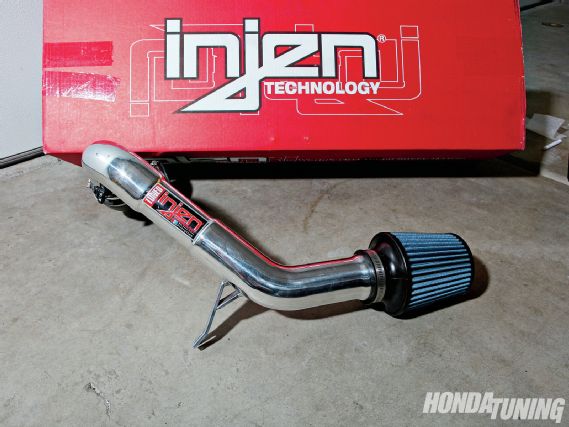 |
CR-Z Intake Test - Tech
|
CR-Z Intake Test - Tech
-
• Injens MR technology (mega-ram)
• Cold-air or short ram option
• 6061-T6 aluminum alloy construction
• Filter features built in velocity stack
• Available in mirror polish or black powdercoat finishes
OEM Intake
The factory intake features a flat panel filter and utilizes a rubber tube to help direct air into the airbox.
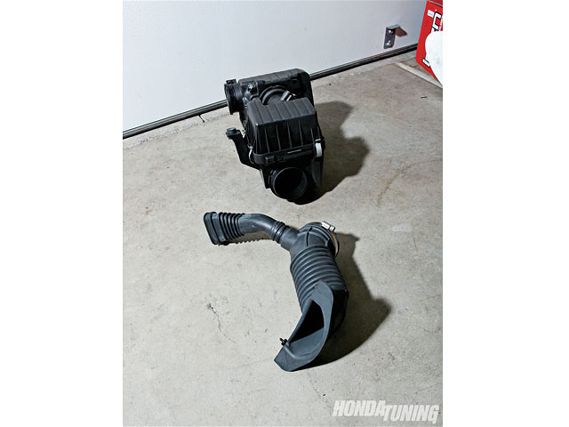 |
CR-Z Intake Test - Tech
|
CR-Z Intake Test - Tech
HKS
Approximate street price: $399
HKS had been eyeing the CR-Z hybrid during its development and saw potential in Honda’s new offering. One of the first to develop any sort of performance parts for the vehicle, the company began marketing its intake and exhaust systems just moments after the car was unveiled to the public. The short ram intake kit features the following:
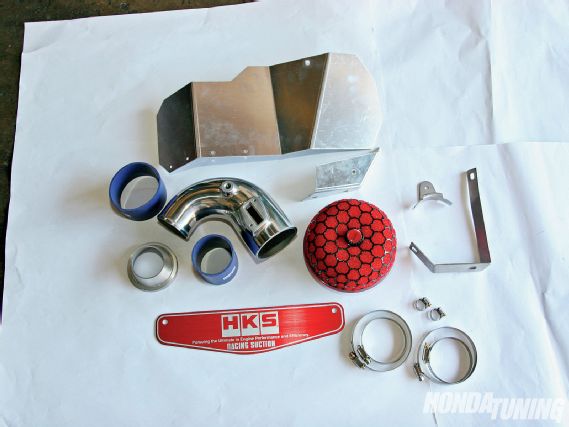 |
CR-Z Intake Test - Tech
|
CR-Z Intake Test - Tech
-
• Filter assembly features a new streamline inner frame to reduce weight and allow air to flow more smoothly
• Velocity stack
• Plastic sealing ring at the base of the new super-honeycomb frame to prevent harmful contaminants from entering the engine and act as support piece for frame
• Lower aluminum heat shield
Doug MacMillan’s Notes
Due to its design the HKS intake had a very bad rich spot just before 2,000 rpm, which caused a massive loss of torque. The datalog of the dyno run with the HKS shows why. At 1,934 rpm the engine’s computer thinks it’s seeing 46 grams/second of air entering the engine and thus adds even more fuel to compensate. However, just 200 rpm later, the ECU is registering a more realistic 20 grams/second. This is likely caused by turbulence and reflections of air pulses around the airflow meter due to the tapered and irregular shape of the intake.
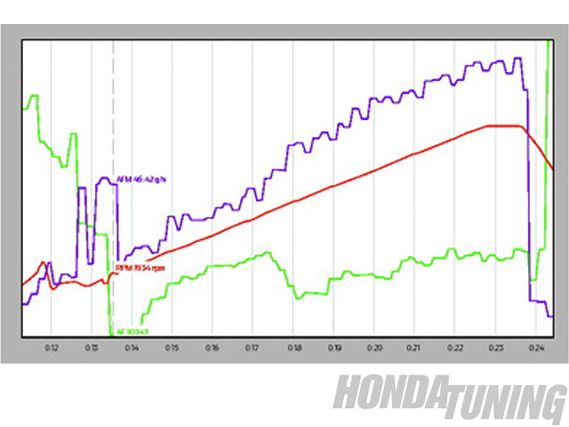 |
CR-Z Intake Test - Tech
|
CR-Z Intake Test - Tech
The AEM has a resonance point at about 3,250 rpm and another at twice the rpm (6,500 rpm). It sounds great at those two points and probably contributes to the highest overall power. The datalogged intake temperature of the HKS was 100F versus 86F from the stock intake. This is one reason the stock intake outperformed the HKS unit on this particular test day.
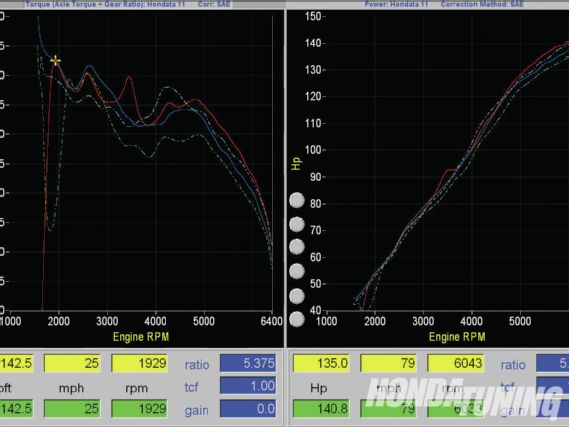 |
CR-Z Intake Test - Tech
|
CR-Z Intake Test - Tech
Connect
AEM
www.aempower.com
HKS
www.hksusa.com
Hondata
www.hondata.com
Injen Technology
www.injen.com

